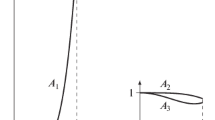Abstract
The Principle of Least Action Interaction, developed by the dynamical astronomer Michael W. Ovenden, is tested using a new algorithm based on the ergodic hypothesis that the time mean of the disturbing function is equal to the space mean. This algorithm is an improvement over the one that Ovenden (1972) used in testing his principle, i.e. it can be applied to systems having more than three satellites without violating the conservation law of angular momentum and these satellites may have significant inclinations. This algorithm treats the problem of finding the configuration of least action interaction as a Lagrange multiplier problem. Renormalization group techniques and existing non-gradient optimization algorithms are incorporated into this new algorithm to reduce some of the numerical complexities.
This algorithm is tested on the planets and asteroids in our solar system and on the satellite systems of Jupiter, Saturn, and Uranus. In most cases the results show that the current distances of the satellites from their primary is very close to the minimum interaction-action configuration for that system. The possibility of a planet lying beyond Pluto is investigated using this algorithm.
Finally, some of my results are compared with those of Ovenden (1972) for our solar system. The results indicate that the interaction-action potential is lower using this new algorithm than the potential obtained from Ovenden's. Also, greater skepticism is raised concerning the one-time existence of a planet of 90 earth masses lying between Mars and Jupiter.
Similar content being viewed by others
References
Ashbrook, J.: 1978,Sky and Telescope,55, 4–5.
Astro-News, Feb. 1978, ‘Kowal Discovers Miniplanet’, p. 65.
Beatty, J. K.: 1985,Sky and Telescope,69, 501–502.
Byrd, P. F. and Friedman, M. D.; 1954,Handbook of Elliptic Integrals for Engineers and Scientists, Springer-Verlag, Berlin.
Chaikin, A.; 1986,Sky and Telescope,71, 338–343.
Hills, J. G.; 1970,Nature Phys. Sci. 225, 840–842.
Hooke, R. and Jeeves, T. A.; 1966,J. of the ACM,8, 212–229.
Napier, W. M. and Dodd, R. J.; 1973,Nature Phys. Sci.,242, 250–251.
Nieto, N. M.; 1972,The Titius-Bode Law of Planetary Distances; Its History and Theory, Pergamon Press, Oxford.
Ovenden, M. W.; 1972, in B. Tapley and V. Szebehely (eds.),Recent Advances in Dynamical Astronomy, D. Reidel Publ. Co., Dordrectht, Holland, pp. 319–222.
Ovenden, M. W.; 1975,Vistas in Astron.,18, 474–491.
Patton, J. M.; 1981, ‘On the Derivation of the Titius-Bode Law’, Unpublished Doctoral Thesis, Purdue University.
Pollard, H.; 1966,Mathematical Introduction to Celestial Mechanics, Prentice Hall.
Powell, M. J. D.; 1964,Computer J.,1, 155–162.
Richardson, D. E.; 1945,Pop. Astron.,53, 14–26.
Van Flandern, T. C.; 1976, in V. Szebehely (ed),Dynamics of Planets and Satellites and Theories of Their Motion, D. Reidel Publ. Co., Dordrecht, Holland, pp. 89–99.
Wilson K. G.; 1976, in N. Metropolis, S. Orszag, and G. C. Rota (eds),Surveys in Applied Mathematics, Academic Press, pp. 179–195.
Wolfe, P.; 1959,Comm. of the ACM,2, 12–13.
Author information
Authors and Affiliations
Rights and permissions
About this article
Cite this article
Patton, J.M. On the dynamical derivation of the Titius-Bode law. Celestial Mechanics 44, 365–391 (1988). https://doi.org/10.1007/BF01234273
Received:
Accepted:
Issue Date:
DOI: https://doi.org/10.1007/BF01234273




